In the year 1840, Georg Wilhelm Friedrich Hegel, the German philosopher implied that India has no philosophy, only religion. He wrote, “The Hindoo is incapable of holding fast an object in his mind by means of rational predicates assigned to it, for this requires reflection.” Hegel distinguished between the universality of concept and subjective idealism of representation. He advanced the proposition that such universal conceptualisation theory does not exist outside Greco-Roman philosophical traditions. The sub-text of this assumption is the centralisation of Europe (Euro-centricity) at the cost of all other civilisations, especially India. In other words, Indian civilisation was theory-dead.
Following Hegel, in 1896, the architectural historian Sir Banister Fletcher made a theoretical distinction between Western architecture, originating from Greece, as “Historical architecture” and the rest as “Non-Historical Architecture” and not worthy of any further attention.
“These non-historical styles can scarcely be as interesting from an architect’s point of view as those of Europe, which have progressed by the successive solution of constructive problems, resolutely met and overcome; for in the East decorative scheme seem generally to have outweighed all other considerations, and in this would appear to lie the main essential differences between Historical and Non-Historical architecture.”1
Fletcher positioned Indian architecture in the global context by imagining “The Tree of Architecture” as a schematic diagram with “branches” of architectural style beginning with six—Peruvian, Egyptian, Assyrian, Chinese, Indian, and Mexican. He placed Greek at the central trunk. With this metaphor of the tree, mirroring the biblical “The Tree of Life”, Fletcher suggested an evolutionary model of global architecture, whose core ideas originated in Greek architecture and through the linear progression of history, culminated in the Modern American style. Fletcher identified six determinants of architecture: geography, geology, climate, religion, society, and history. Much of what has since followed as the theory of architecture has been a variation on this theme. This is also the root cause of our ambivalence in defining a coherent theory of architecture in India.
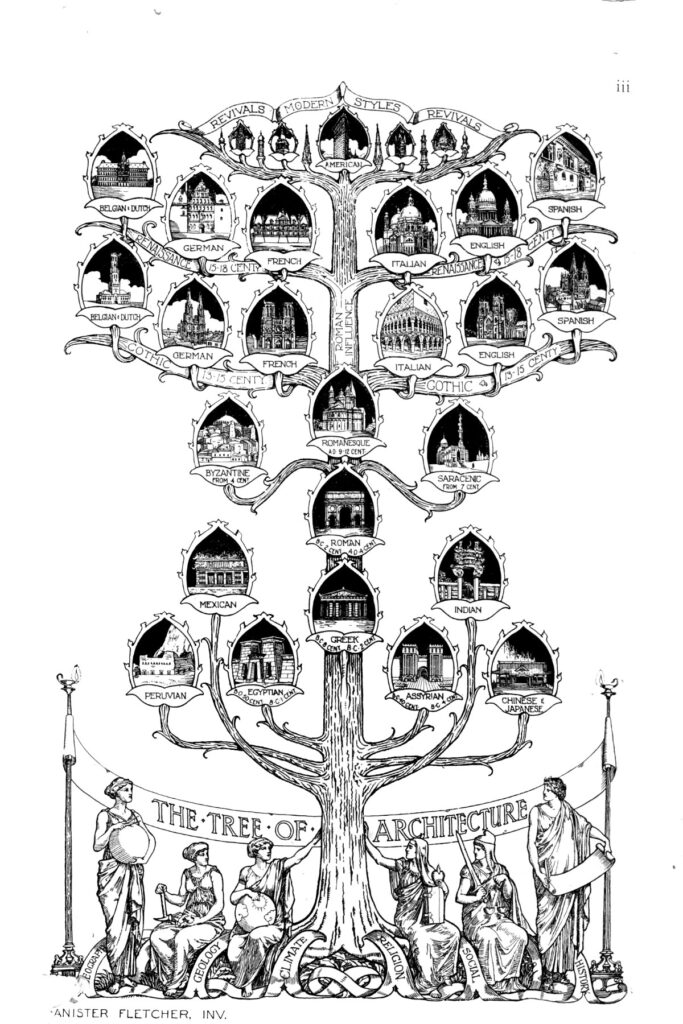
Our sense of history plays a significant role in causing this ambivalence: we have accepted the Hegelian notion of history as normative. Apart from the above-mentioned disdain for the reflective qualities of the Indian mind, Hegel gave us the metaphor of the ‘arrow of time’. He postulated that time moves in a straight line like an arrow from the past to the present and the future. The roots of our present conditions lie in the past and will also determine the future. Thus, we look at history to harvest the original events that will explain what we are and tell us the story of how we got here and how the future is more and a better version of the present.
A historian’s task, then, is to select some events from the vast array of events of the past and construct a coherent narrative that validates the present and the imagined future.
Search for the origin is a crucial aspect of this historicism. And since this was the era of rationalism in the 19th century, only rationally verifiable facts, chronology and logically linked events can be counted as historical.
However, since this historical consciousness involves selection by the historian, there is always an element of subjectivity; history is his story. To put this in perspective, we will have to understand that the historian operates at the intersection of two axes; one, the temporal axis of past, present and future, and two, the ideological axis of the prevalent worldview, which is a culturally conditioned view of who we are and where we want to go. By the 19th century, Europe was the most powerful civilisation both in terms of soft and hard power. Four centuries of Enlightenment projects had given it unprecedented knowledge in science, humanity and arts. At the same time, through conquests many European countries had acquired colonies all over the world. It was natural for European society to believe that Europe was the central font of all knowledge. They had understood the story of human evolution that placed European society at the pinnacle and that there was nothing in the history of other peripheral colonies to contradict this worldview. This was the birth of Eurocentricism. Hegel had hyphenated history and theory; history-theory. History came to be regarded as a form of knowledge intertwined with imperial power.
It is in this perspective that we must read Hegel’s dismissal of India as theory-dead and Sir Banister Fletcher’s subjective reading of Indian architecture as non-historical, decorative and without substance. This was the ‘truth’ that validated the European power. Michel Foucault has postulated that a historical period is characterised by epistemes—ways of thinking about truth and discourse, such that it is the necessity of power to produce knowledge and the necessity of knowledge to maintain power. Truth is always that which is spoken by power.
Fletcher’s history of architecture and India’s place in it has, thus, become the history-theory of architecture putting us in a state of amnesia about Indigenous theoretical constructions in architecture.
This part of the colonial historiography has now been ingrained in the Indian historical consciousness so effectively that we do not realise that it contradicts our memories. Memories of medieval European society have been implanted in the Indian psyche with devastating consequences. The periodisation of history as ancient (golden), medieval (dark ages), and modern (colonial), whatever its motives, has now been internalised by Indian scholars resulting in civilisational amnesia of our past. It has become an epistemological obstacle, making it difficult for us to see our history in totality.
If the received wisdom of this Western historiography is Eurocentric and subjective, how do we trace the evolution of architectural consciousness in India? There is no doubt that with the sophisticated philosophical traditions and robust architectural history, there must have been a theoretical bedrock that could codify and explain architectural practices in the past but has escaped or been ignored by Western observers. To overcome the civilisational amnesia we are living with, we must revive the memories that define our architectural consciousness. It will have to be all memories, not selective events and we must distinguish between personal memories and civilisational memories. We must look for an alternative narrative of history away from the Hegelian notion of the arrow of time. I propose an alternative to the Hegelian historiography.
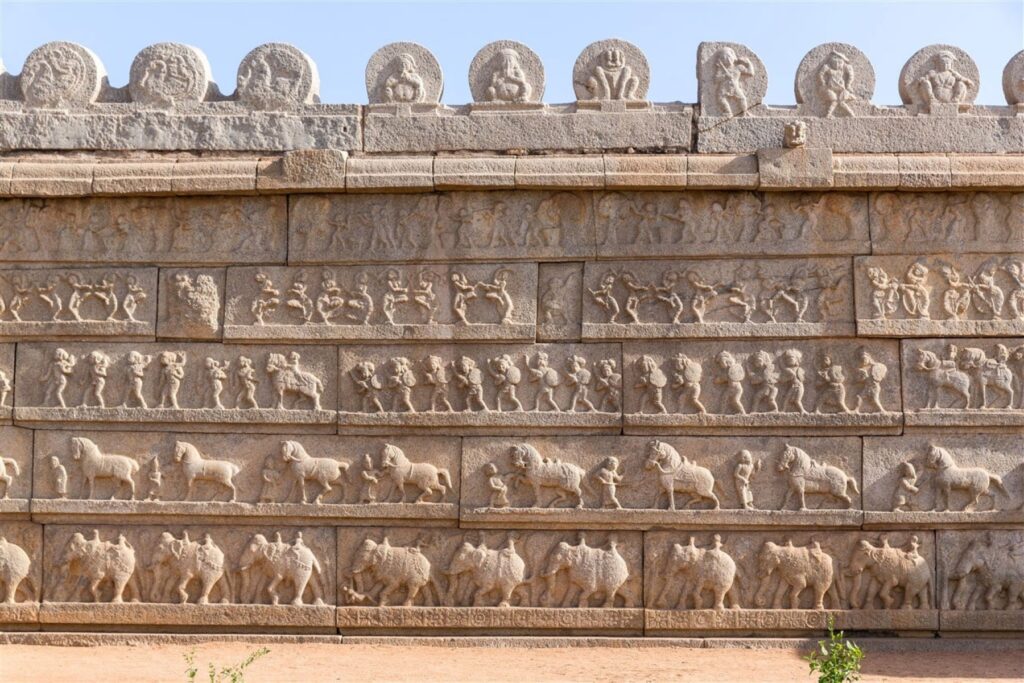
Take the depiction of the story of Ramayana on the walls of Hazara Rama temple in Hampi. It says nothing of the historical origin, chronology or provenance. Factual verifiability is of less concern to the artists; a thousand different memories passed on from generation to generation, are of more significance. The same is true of the murals in Ajanta caves. We are free to interpret and reconstruct history in a thousand different ways.
What memories does architecture embody? Arguably, the earliest instant of architectural consciousness can be found in Rig Veda dating back to 1200 BCE. I refer to Purusha suktam (hymn of the Cosmic Being). It is a magnificent moment of humanity contemplating the architecture of the cosmos and finding a form and a structure that cannot be represented but with the metaphor of the Cosmic Man. Mankind has always been fascinated by the perfection of the human form. By imagining the incomprehension of the cosmic vastness in the likeness of the human form, this poetic hymn invests the universe with architectural order and structure. This hymn celebrates the spiritual unity of the universe in the metaphoric likeness of the human body. It is an architectural imagination. Though it is a hymn presented in the discursive form of language, its core is a poetic imagination. In this poetic imagination of the hymn, Purusha, the cosmic being is both immanent in the manifested world and yet transcendent to it. From this being, the suktam tells us, the original creative will (identified with Viswakarma, Hiranyagarbha or Prajapati) proceeds, which causes the projection of the universe in space and time.2 Purusha is described as a Cosmic Being who universally pervades everything, conscious and unconscious.
Metaphors are embodied imaginations. They are imaginative rather than propositional and grounded in experience rather than involving deduction from abstract principles. Metaphorical and analogical thinking predates symbolic thinking and is devoid of any abstract and causal cognition. Metaphors transfer attributes without meanings, values or morality, such as good, evil, right, or wrong. Thus, while elements such as the moon, the sun, fire, air and the sky are presented in Purush suktam as analogous to the anatomy of the human form, no hierarchy of values is attached to them. Though only in the poetic form, this consciousness of cosmic architecture remained just that, a poetic imagination transferred from generation to generation through memory (smruti) and telling and re-telling (shruti) for eighteen centuries.
Around the sixth century CE, we find a visual image, a possible symbolic visualisation, a mandala, in Brihat Samhita that comes close to the description in Purusha suktum. However, it would be a mistake to assume a direct historical connection between Brihat Samhita and Purush suktam. Curiously, nowhere in Brihat Samhita is there any mention of, or a reference to, the suktam. Varāhamihira, its author, does credit other scholars, such as the sage Maya, who have thought about architecture before him but does not mention Purusha suktam. Though there are certain similarities between the texts and the mandala, there are also indications that it may have evolved and added onto during the intervening period through memories and oral telling and re-telling. The closest resemblance to this in Brihat Sanhita can be found in verses 46-48. This representation imagines all elements as deities each in complete human forms and not just analogous to the anatomy of the Purusha. It also signifies relationships between them by their spatial positioning, in reference to the centre, thus implying hierarchy and relative significance. If the mandala in Brihat Sanhita is a descendant of the Purusha suktam, this lineage is via memories and not historical chronology.
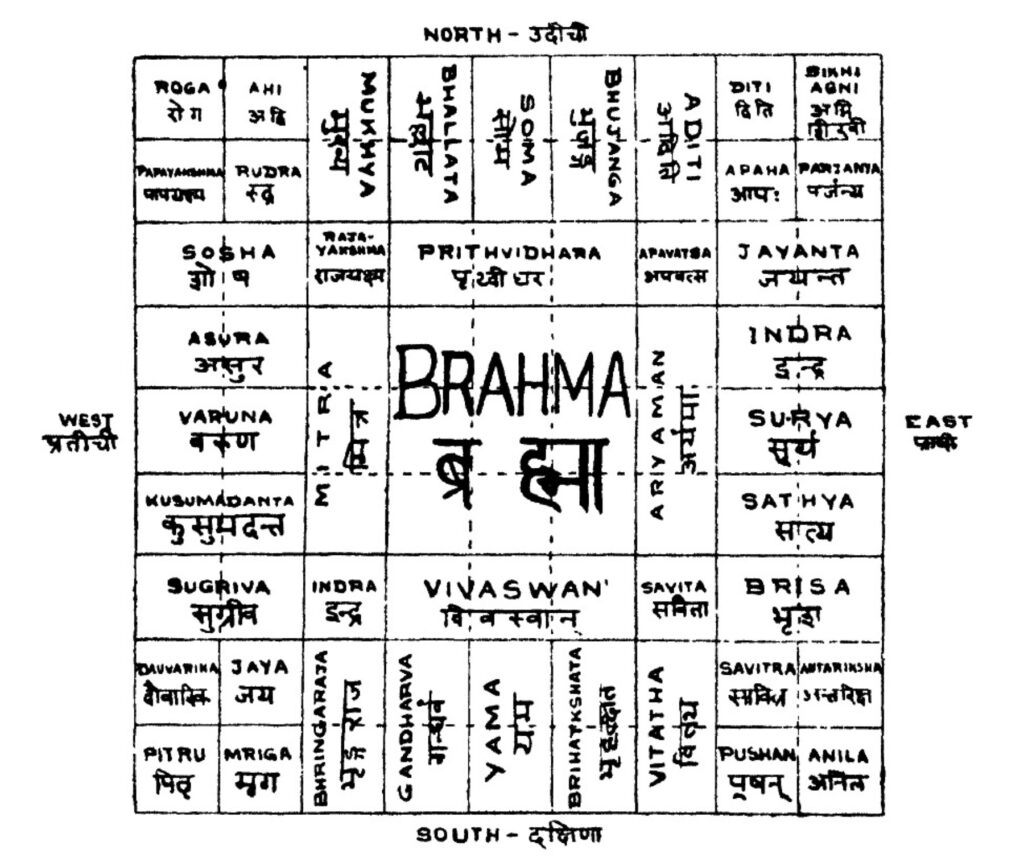
There have been other texts like Mayamatam (attributed to the sage Mayan, 9th – 12th century CE), Samrangan Sutradhara (attributed to Raja Bhoja, 11th – 12th century CE) and Manasara (attributed to no one author). However, Unlike Brihat Samhita, which has a vast canvas covering subjects from astrology to animal behaviours and a relatively small space given to architecture (Vaastu Vidya), these treatises are exclusively devoted to architecture, primarily, though not solely, concerned with temple architecture. Nonetheless, Brihat Samhita stands out for one notable contribution: it presents the first visual representation of an architectural idea, a diagram, and a matrix that is a schematic representation of the Hindu temple, an instance of reflection, abstraction and symbolic representation. This matrix, a mandala, comes closest to the visual representation of the poetic imagination of the hymn of the Cosmic Being – Purusha suktam.
Coincidently, just about the same time that Varahamihira was writing Brihat Samhita, in Ujjain, architects and artisans at Aihole, Badami, and Pattadakal in south India, were experimenting to find the ideal form of the Hindu temple. They were looking for a logic that brings meaning to spatial and dimensional decisions of the temple plan and prevents arbitrariness. This arbitrariness is apparent in the Durga temple, the Lad Khan temple, and a series of small prototype temples, at Aihole. A shared idea of what constitutes a Hindu temple is not yet established. Historian George Mitchell’s extensive study of the architecture of Deccan hints at communication between south and central India through conquest however, we do not have any documentary evidence. Still, It cannot be ruled out that Chalukya ruler Pulakesin II’s military forays up to the Skhipra River, close to Ujjain, in 618 CE, may have brought back knowledge and skills that Varāhamihira was codifying. This inference is supported by the fact that a century later, descendants of Pulakesin II, notably King Vikramaditya II (reigned 733 – 744 CE), are credited with commissioning the more evolved temples, in the northern Nagara style, at Pattadakal and Badami, all based on the mandala of Brihat Sanhita.
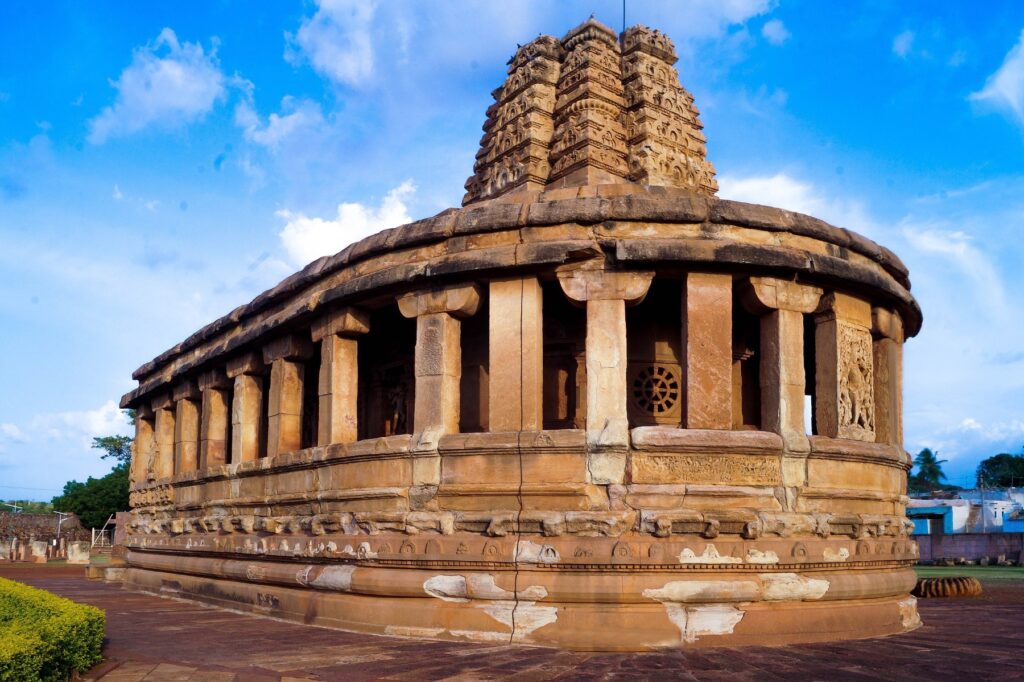

It is fair to infer that the divine matrix by Varāhamihira provided the underlying logical order for the design of an ideal temple in Pattadakal and Badami. The Sthapatis realised that if this matrix (mandala) were used as a divine archetype for the temple’s design, the incomprehensible cosmos would be made comprehensible in the temporal forms of the temple. It became the source of logic and validation for temple architecture. In their very arrangement of the parts and their relationship with the world around them, these temples represented the order of the universe as they perceived it and made others also sense it. The temple was not the house of God but a symbolic representation of God Himself, the Cosmic Being. This mandala matrix has been internalised into the civilisational memory such that countless temples were built with the help of this template. It was the ideal guide for spiritual architecture.
Unfortunately, knowledge of this was contained in the classical language, Sanskrit, which was never the language of the common people. They carried on and built their houses and other temporal buildings with memories of the houses they and their ancestors have always built, with the oral tradition in local dialects that began to evolve as languages only from the 12th century onward. This knowledge endured not in the classic scriptures but in the memories of ordinary craftsmen and was free to evolve. The inability to formalise this knowledge in written languages prevented critical Brahminical scrutiny and facilitated its evolution organically.
Meanwhile, the use of the classical language, Sanskrit, declined since the 10th century. With the advent of the Bhakti movement and the resultant evolution of local dialects into Bhashas, knowledge of spiritual architecture, too, began to be confined to libraries and not accessible for natural growth as the normal process of modernisation. This made it easy for European knowledge—Orientalism—to replace it. It took over the space once occupied by Sanskrit. It was not a hostile occupation; Sanskrit had already begun to vacate the space.
Interestingly, though, the oral tradition of temporal architecture continued unhindered and was open to new ideas and images that came in with the European, Arab, Chinese and Persian traders, resulting in a robust syncretic cultural landscape that is India.
The consciousness of Mandala appears again only in 1946 when Stella Kremrisch, a brilliant Austrian art historian and linguist, was invited by Rabindranath Tagore to teach at the Visva-Bharati University in Santiniketan in 1922 and whose seminal two-volume publication “Hindu Temple”, a profound analysis of Hindu temple architecture, offered its modern interpretation. In a profound intellectual jump, Kremrisch not only established a connection between the Purush suktam and Brihat Sanhita but also conceptualised the integration of the poetic and symbolic imagination of Purusha suktum and its visualisation as the mandala of Brihat Sanhita as the symbolic representation, “Vastupurushamandala” as the conceptual and theoretical foundation for temple architecture in the Indian subcontinent.
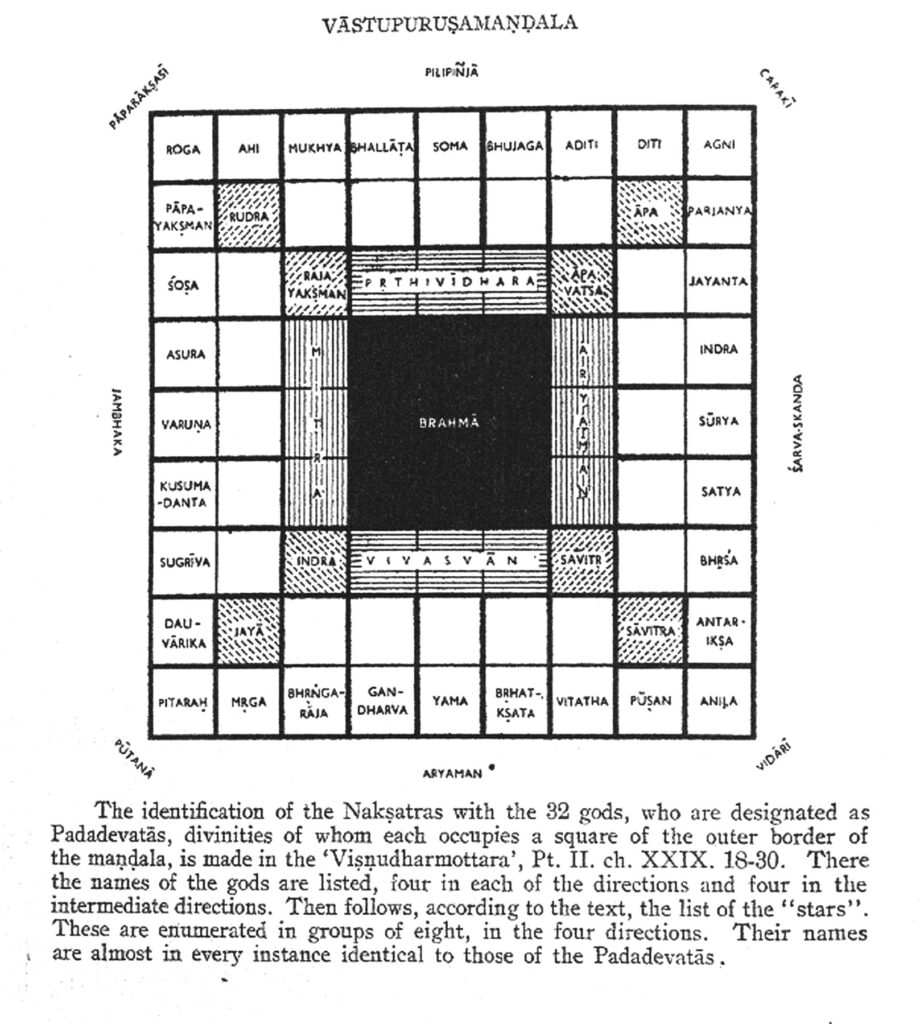
“The vastu-Purusha-mandala represents the manifest form of the Cosmic Being; upon which the temple is built and in whom the temple rests. The temple is situated in Him, comes from Him, and is a manifestation of Him. The vastu-Purusha-mandala is both the body of the Cosmic Being and a bodily device by which those who have the requisite knowledge attain the best results in temple building.”3
It must be emphasised that this composite term, “Vastu+Purusha+mandala”, is a relatively recent intellectual construction, associating the poetic imagination of Rigveda with Vaastu and its graphic visualisation in mandala in Brihat Sanhita. I have not been able to find it used or mentioned before. Kramrisch seems to have coined it in 1946. Its reference is limited to spiritual (temple) architecture and does not extend to temporal forms. Unfortunately, Kramrisch’s study coincided with India’s political independence in 1947 and in the subsequent euphoria of freedom and the desire to build architectural icons of the independent nation, with modern aspiratons, the architectural community largely ignored it. It remained in the scholarly libraries only occasionally referred to by scholars. In Stella Kremrisch, we can see the overlap of the two classical knowledge traditions; English (European) and Sanskrit.
Modern architecture in India, thus, displays two parallel streams; on one hand, contemporary architects, mostly trained in the West, or the imported Western education, embraced Sir Bannister Fletcher’s ‘Tree of Architecture’ and built several remarkable confluence of the modernist ethos with sub-conscious memories of the lived temporal architecture of the past. On the other hand, the oral and vernacular traditions, earlier devoid of the classical Sanskrit knowledge and now similarly unfamiliar with the Western classical knowledge in English, had continued throughout not only uninterrupted by colonialism but embracing the new images that it brought.
For example, one of the Shiva temples of Hetampur in Birbhum district in West Bengal built in 1847 displays images of Durga happily coexisting with Queen Victoria. These artists and craftsmen were not constrained by any false cultural or civilisational pride nor by any religious or ideological orthodoxy. They were, in fact, joyfully open and welcomed the opportunity of integrating their memories with those of the others who came and called India their home. The Nelukuttus of Kerala, the Chetinad Houses of Tamil Nadu, the Havellis of Rajasthan and Gujarat and many palaces and forts exemplify the memories of Indigenous lived experiences coupled with experiences gained in contact with Europeans, Arabs, Chinese and the Persian people. These are the architectural counterparts of the friezes and murals of Hazara Rama and Ajanta respectively as well as of the Hetampur temple. In that respect, this architecture represented a ‘modernity’ of an organic nature. If modernity implies being in tune with the time one lives in, then, these buildings were ‘modern’ at the time they were built. Neither of these two streams of architecture has any reference to Mandala. Mandala was seen as relevant for temple architecture and its consciousness was confined to temple architects. Ironically, the term, sthapati now came to be regarded as referring to temple architects.


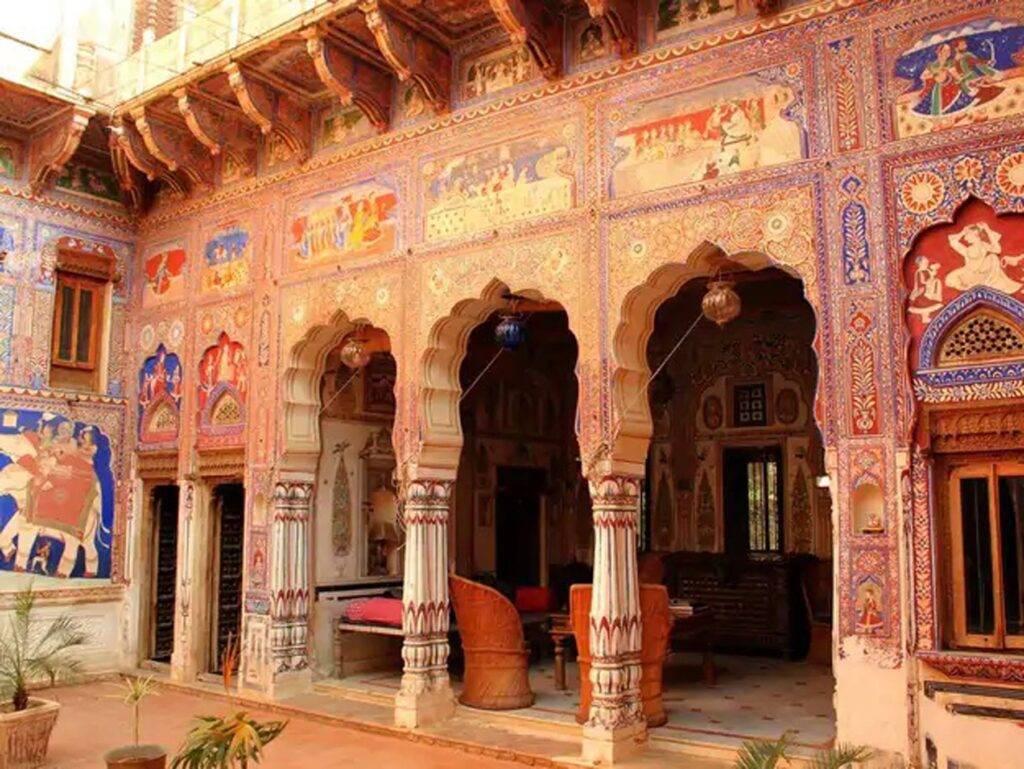
Mandala resurfaced as a crucial ingredient of the architectural lexicon in 1986. In the 1980s, the Government of India organised the Festival of India in several major capitals to project the identity of India as an ancient civilisation. An exhibition ‘Vistara’ was mounted as part of these festivals. The exhibition was curated by a team of architects and scholars headed by Charles Correa. This was the first serious and ambitious attempt to confront the history of Indian architecture and compose a new narrative independent of colonial historiography. The accompanied catalogue contained several scholarly essays supporting this narrative. Mandala was brought in as the central theme of this narrative. However, I believe there was a critical error in interpreting Mandala.
Introducing the section, “Mandala – Architecture as a Model of the Cosmos”, Team Vistara writes,
“What is this deep-structure that surfaces time and time again? For us in India, the answer goes back thousands of years. To the Vedic seers, the manifest world was only a part of their existence; there was also the world of the non-manifest. The forms and events of the perceived world are significant only to the extent that they help us understand the nonmanifest layers that lie beneath. Magic diagrams, called yantras, explain the nature of the cosmos. Of these, the Vastu-Purusha Mandala forms the basis of architecture. It has the potential for infinite applications and adaptations in the making of houses, palaces, temples and even cities.”
The last sentence betrays a misconception that tarnishes an otherwise credible endeavour. The relevance of the Mandala for spiritual architecture is beyond doubt. Belonging to the Vedanta school of Indian philosophy (darsana), It is a sublime tool for conceiving a temple as the earthly representation of the non-duality (advitam) of the non-manifest and the manifest. In the modern parlance of linguistics, structuralism and anthropology, it is the deep structure which remains unmanifest allowing multiple manifestations in the realm of space and time. However, these multiple manifestations are confined to the temple forms. The Hindu temple is not a place of habitation. The only space in the temple, garbhagriha, is a deliberate and purposeful non-space devoid of natural light, symbolising no connection with the temporal world of perception. One enters it leaving behind all temporal connections and only in that state one may gain self-realisation: one is re-born. That is the meaning behind the name which means a womb-chamber.
Architecture of houses, palaces, and cities, on the other hand, is all about temporal connections. Here space of habitation is as significant as the physical body of the building. Any attempts to explain all the multiple manifestations in the temporal realm by the symbolism of the Mandala, may either dilute the meaning of the mandala or we might have to invest temporal architecture with metaphysical attributes.
In the section titled ‘Manthana’ Team Vistara attempts to find traces of mandala in four examples of temporal architecture. But I find the attempt laboured. Its argument rests on the assumption that through the process of assimilation and transformation, “akin to osmosis” temporal architecture, including the tribal traditions, has been assimilated into the larger narrative with its origin in Mandala. For example, a hint of an underlying structure of the mandala is assumed in the square plan of the Diwan-i-Khas at Fatehpur Sikri. “For though the square plan came with Akbar from Central Asia, to the Hindu craftsmen constructing the building it would represent a mandala, i.e., a model of the cosmos.” This is not convincing as it looks at only the surface-structure of the visible form—the square plan—and misses the deeper symbolic meanings embedded in the mandala. The craftsmen, not conversant in Sanskrit, were unlikely to have any deep consciousness of the mandala. Besides, the symbolism of ‘Eksthambha’, the axis mundi of the universe, is already established in the central column of Diwan-i-khas by several scholars.
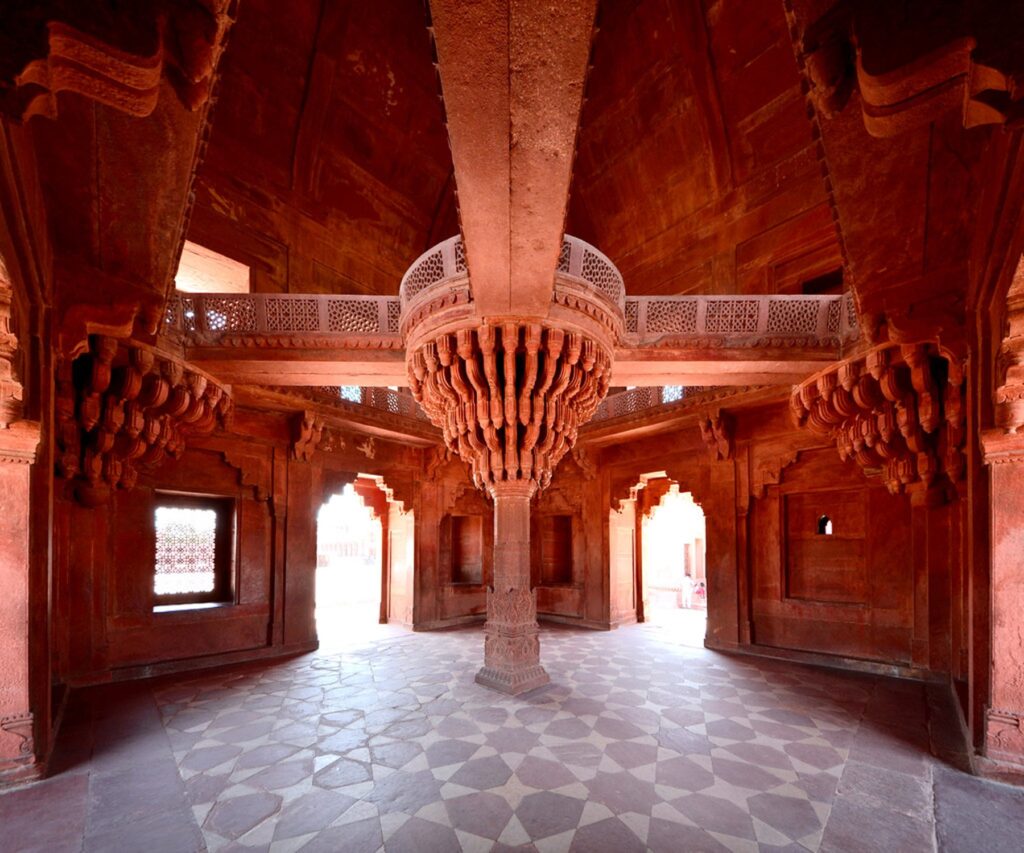
I sense traces of the Hegelian historiography here. In the 1980s, India embarked upon a campaign to project its civilisational greatness. While the Festival of India was addressed to foreign audiences, a slogan, ‘Mera Bharat Mahan’—my India is great, was meant to instil pride and a sense of nationalism in the domestic audiences. The founding fathers believed that India would regain its greatness in future through its own efforts at modernisation, industrialisation and scientific temper. Now, on the other hand, the nation was projected to be great already in the present. There was a need to locate the source, an origin, of this greatness and a singular narrative which connected the present with that origin; a classic case of the Hegelian ‘Arrow of Time’; look for an origin and provenance connecting the present with the past in a coherent narrative. However, the inherent diversity of India, acquired by centuries of diffusion with other cultures, made it difficult to arrive at a simple singular story. Leapfrogging back over the past thousand years of diffusion the source of India’s greatness is located in the ancient Sanskritic classical knowledge. For Team Vistara, ignoring a thousand years of robust temporal architecture of the oral tradition, it was the classical mandala. It had the stamp of state authority. The mutual entailment of power and knowledge. History is his story. This stems from a desire to present a singular, all-encompassing theoretical umbrella for all Indian architecture, religious and temporal. Writing the introduction to the Vistara exhibition, Charles Correa says;
“But even in these squatter colonies, generated by the brutal economic forces rampant on our urban scene today, we find all of a sudden a gesture, an image—the rangoli before a front door, the butti on a sari, the bindu on a forehead—that makes us realise these patterns have been generated by an age-old deep-structure of more explicit myths: the yantra, the mandala, the char-bagh.”
I find this to be an incorrect interpretation of Mandala. I believe, there is a deep structure in the temporal architecture of India. However, it is not in the decorative elements of rangoli, butti, or bindu. It will have to be architectural (spatial) and not decorative arts.
It may be located in the patterns of habitation contained in the civilisational memories of the people. Memories of protected intimacies in the spaces of habitation, memories of being one with nature, and memories of ‘poetically dwelling on this earth’, to paraphrase the poet Friedrich Hölderlin. Such a deep structure, a ‘constant’ will have to be present in the architecture of all religions, all communities, all regions, and all eras.
I have found this constant deep structure in the temporal architecture of India. The book, Sense of Itihasa, has extensive elaboration of this. In the 3rd and last segment of this series, I shall present an abbreviated account.
- Sir Banister Fletcher, A History of Architecture on the Comparative Method, 10th Edition, B.T. Batsford, Ltd. London, 1938, p. 888 ↩︎
- Krishnananda, Swami. A Short History of Religious and Philosophic Thought in India. Divine Life Society, p. 19 ↩︎
- Stella Kramrisch, The Hindu Temple, Vol. I, Motilal Banarasidass, Delhi, 1976. p. 21 ↩︎
Note:
This is the second of a three-part series of preview essays for Jaimini Mehta’s forthcoming book, Sense of Itihasa; Architecture and History in Modern India. The book is in two parts;
- Theoria, exploring the representation of Indian architecture in colonial historiography, and
- Praxis, analysing the work of several contemporary, post-independence, architects from the perspective and insights so gained in the first part.
These three essays include excerpts from the first part. The book, published by CEPT University Press, is expected to be available by the end of 2024 or early 2025.
Read other parts here:









One Response
Please upload the third part